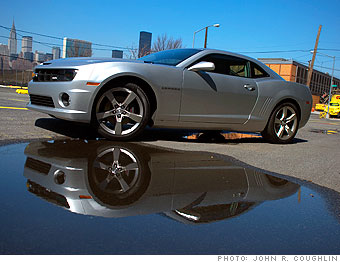Those who opt for the Camaro's 426-horsepower V8 engine get the whole party, noisemakers and all. The Camaro SS I tested had a six-speed manual transmission, which made it even better. I had total control over every growl, roar and burble coming from under the hood. When I slammed on the gas, the rush of sound was accompanied, of course, by a chest-pressing push of acceleration.
The V6-powered Camaro RS I'd tested a few days earlier provided more than enough fun of its own. With an impressive 304 horsepower, the direct-injected engine - the same one used in the excellent Cadillac CTS sedan - provided ample punch, especially in around-town driving. It even sounded nice under a moderate gas pedal press.
It was only when I crushed the pedal like it was a cockroach coming after my last corn chip that the V6 came up a bit short. Not that the power wasn't there, provided we're just talking merging on the highway and not racing on the two-lane road behind the airport. But the sounds were just... wrong. The high-revving V6 sounded like it was working hard. Not like the V8, which sounded like it was just really, really ticked off and ready to eat anything that got in its way
This is is where fuel economy comes in. The V6, you see, gets 29 miles per gallon. (The V8 gets 25.) Yes, there are many other cars that get 29 mpg or close to it. Let's list a few: Honda Accord V6., Toyota Camry V6, Hyundai Sonata V6. None of those cars manage 304 horsepower.
Wanna race?
NEXT: Turning the wheel

